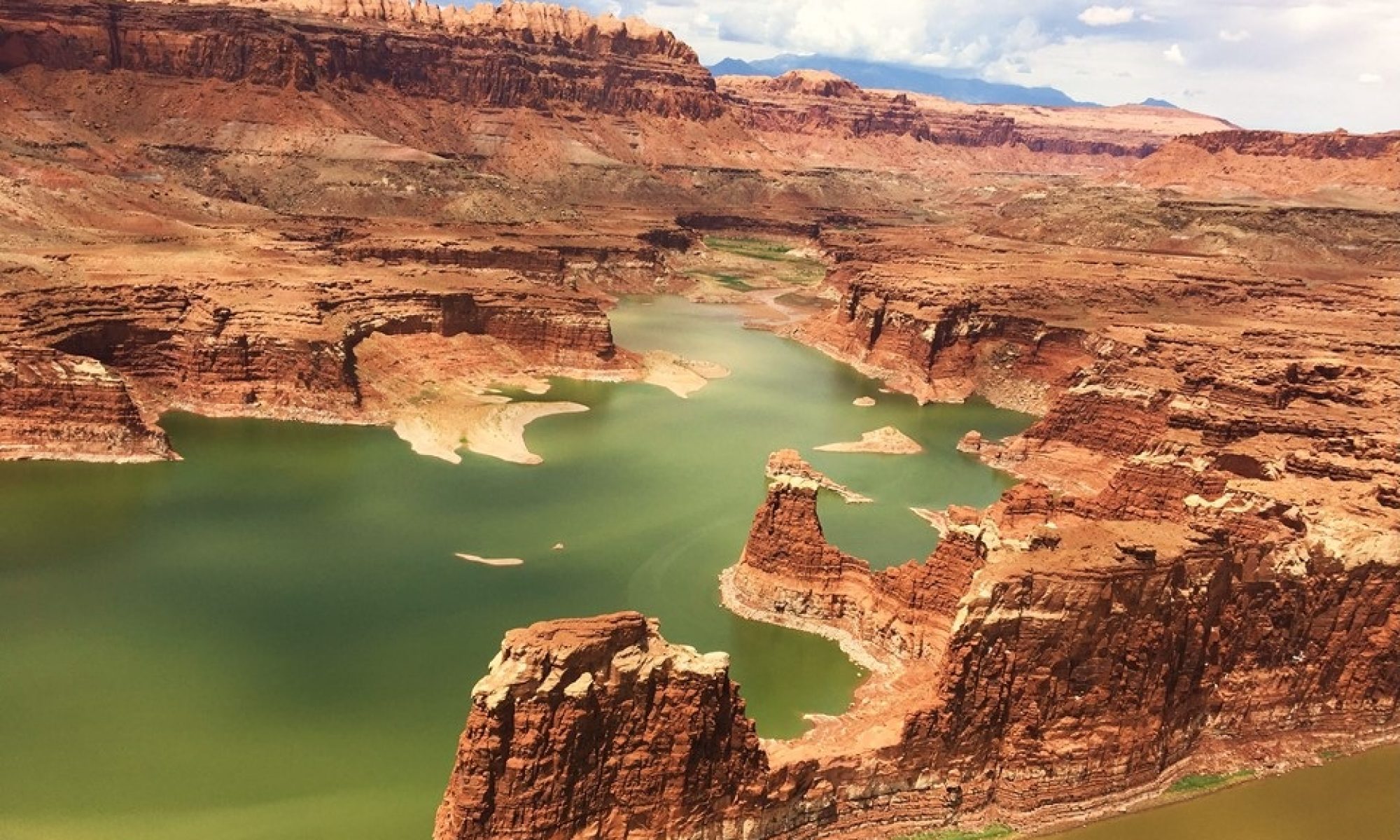Part 2: Uluru – Ayer’s Rock
Thursday morning we were up early to train back to the airport to catch our flights – first to Sydney, and then onto Ayer’s Rock. We enjoyed a breakfast of corn fritters on board the first flight, and then samosas for a second breakfast on second leg of flight. We arrived at Ayer’s Rock at noon, picked up our rental SUV, and drove to our hotel – “The Lost Camel.” We checked-in and picked-up our welcome bag before visiting the local (only) grocery store to get some breakfast muffins for sunrise tomorrow. We then drove to Ayer’s Rock for pictures and a visit to the cultural center to understand the stories of the Indigenous tribes and see them actively painting their unique art designs. Then we drove around the entire rock, marveling at our closeup views of the erosional holes in the rock and the striation of the layering – all while noting that it was a dry 98-degrees outside. We then returned to the resort for much needed cold beers & ciders and began planning the rest of our day. We did some shopping at the Town Square waiting for the temperature to drop before stopping to pick up some pizzas and drinks and heading to the Sunset Overlook to watch the sunset on the rock. This time our foray into the park was a line of cars, all with the same idea- sunset at Uluru Rock. Once we assumed a prime spot, we met strangers, did selfies, ate pizza, and awaited the sunset And – when sunset did come – it was beautiful. A perfect ending to a long day.

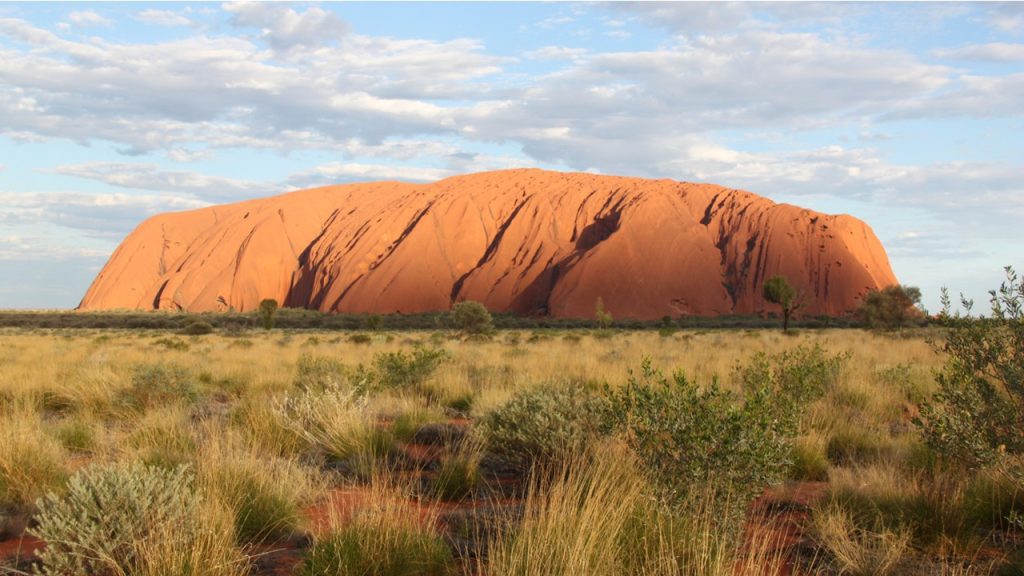
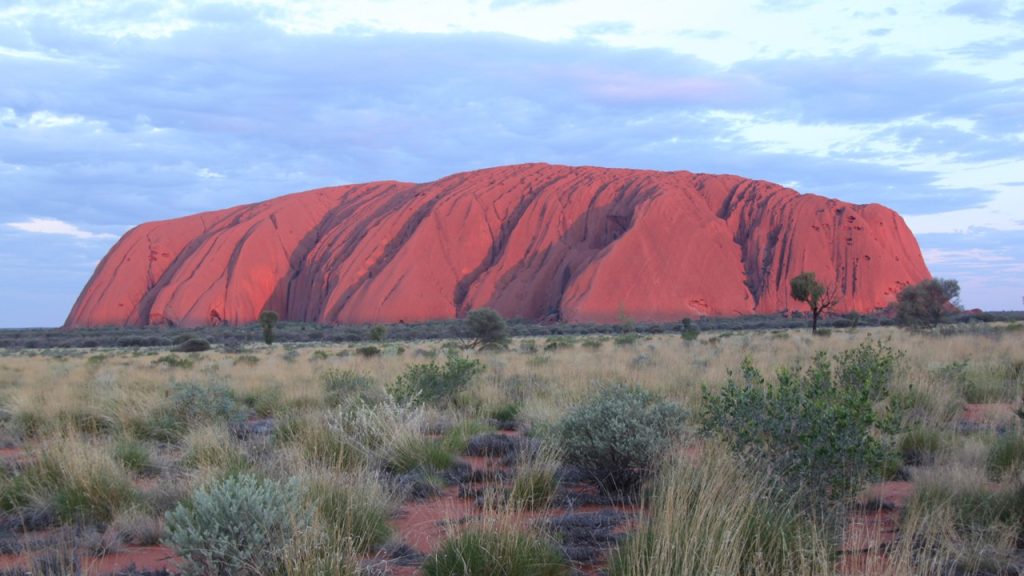
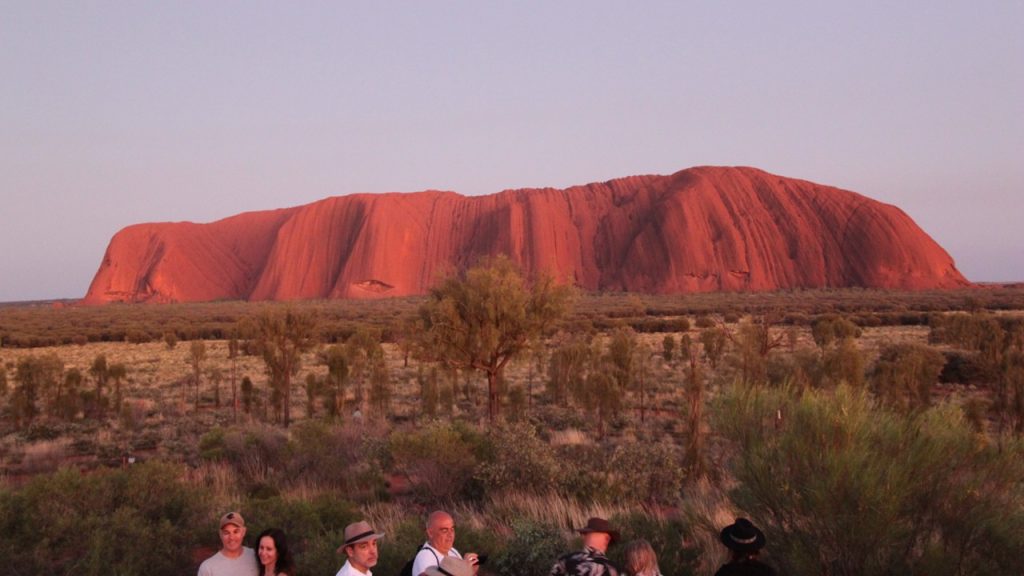
On Friday, we were up early to head back to Uluru to do the base walk. We started walking the 10 kilometer trail the goes all the way around the rock at 6:45 am hoping to avoid the hottest part of the day. We started at Kuniya car park where we were still in shade and with a nice breeze. By the time we were a quarter of the way along the trail, it had moved away from the base and the breeze lessened. The trail is composed of red dirt & grit with only occasional restrooms, water, and first aid at the 1/4 and 3/4 way stopping points, and with only first aid stations at the 1/2 and end stopping points. Over half the route is considered sacred grounds which means no picture-taking is allowed. No climbing of any of the rocks is allowed any longer since the rock is sacred, but in the past this was not true. At the 3/4 point of the walk is the Kantju Gorge which contains precious water, but can catastrophically flood. We finished the walk in 2 ½ hours.
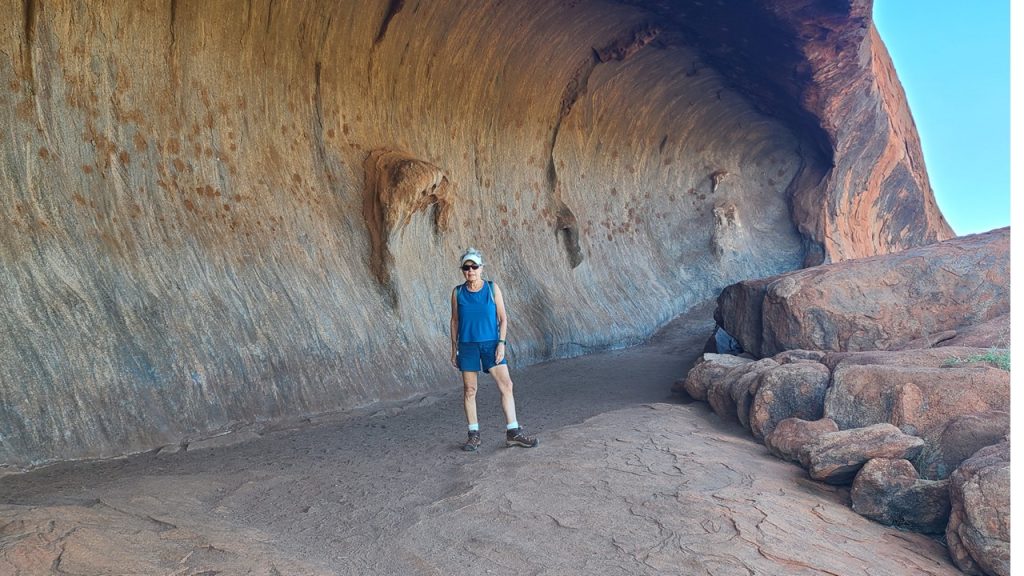
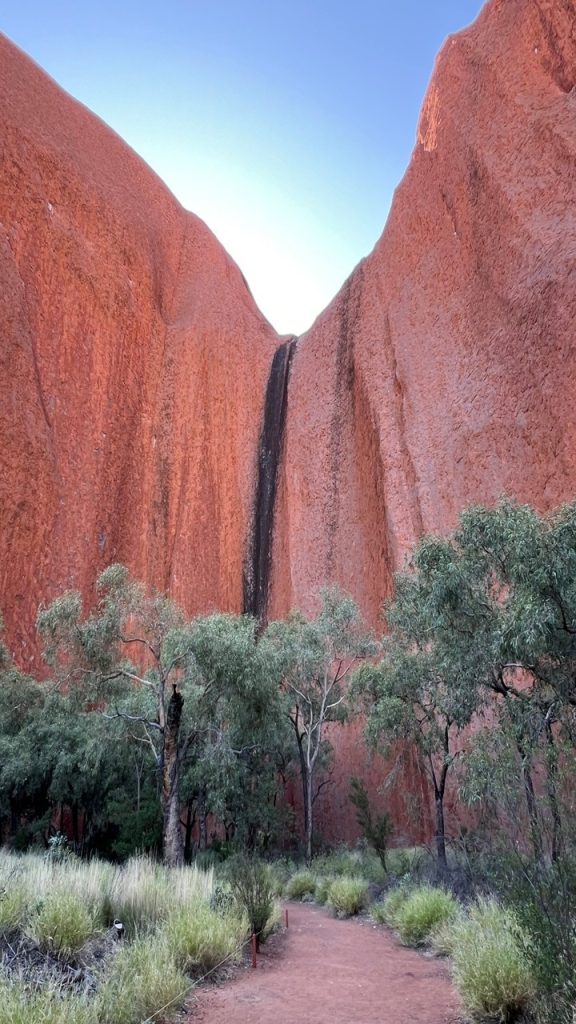
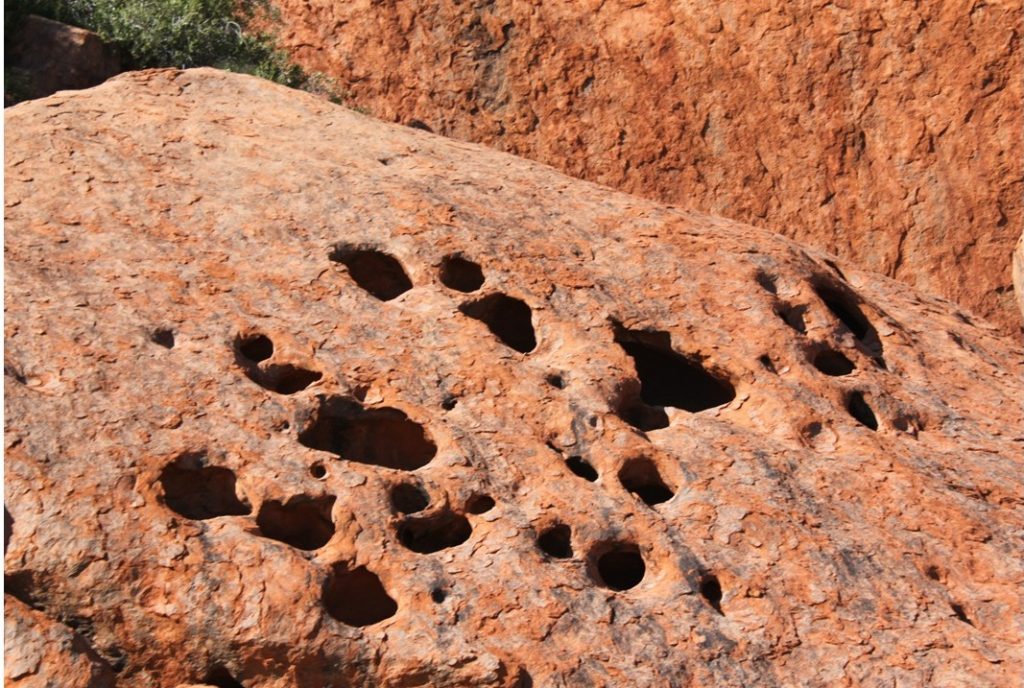
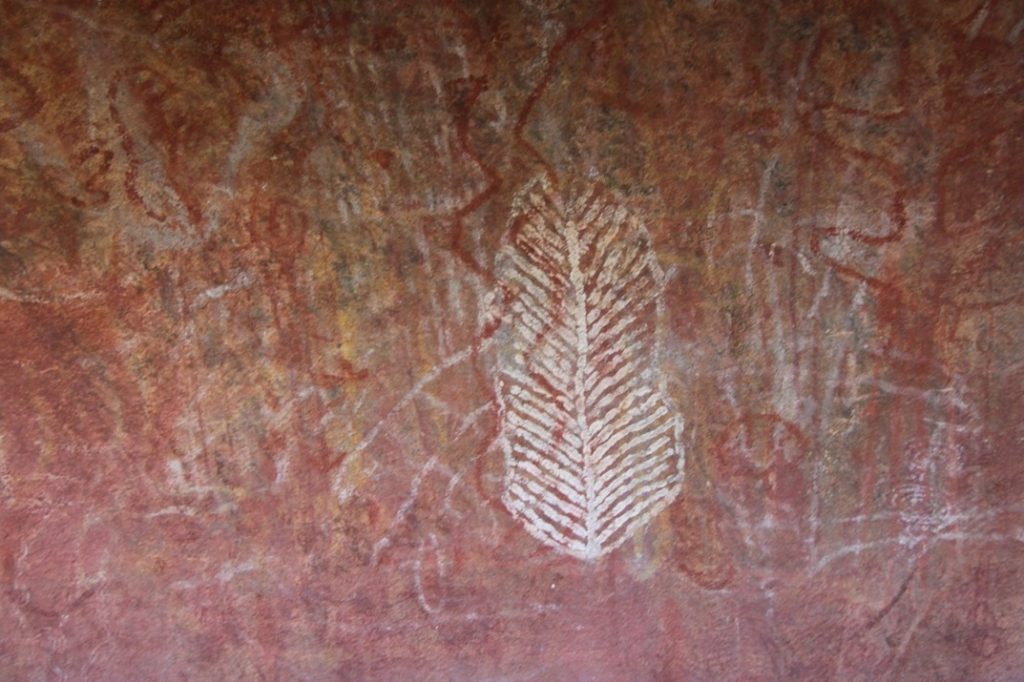
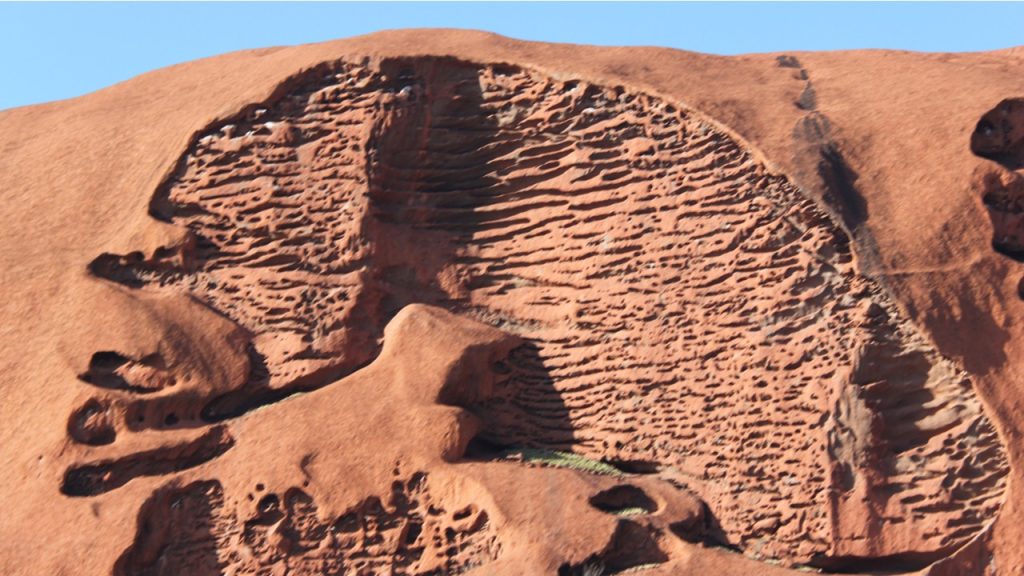
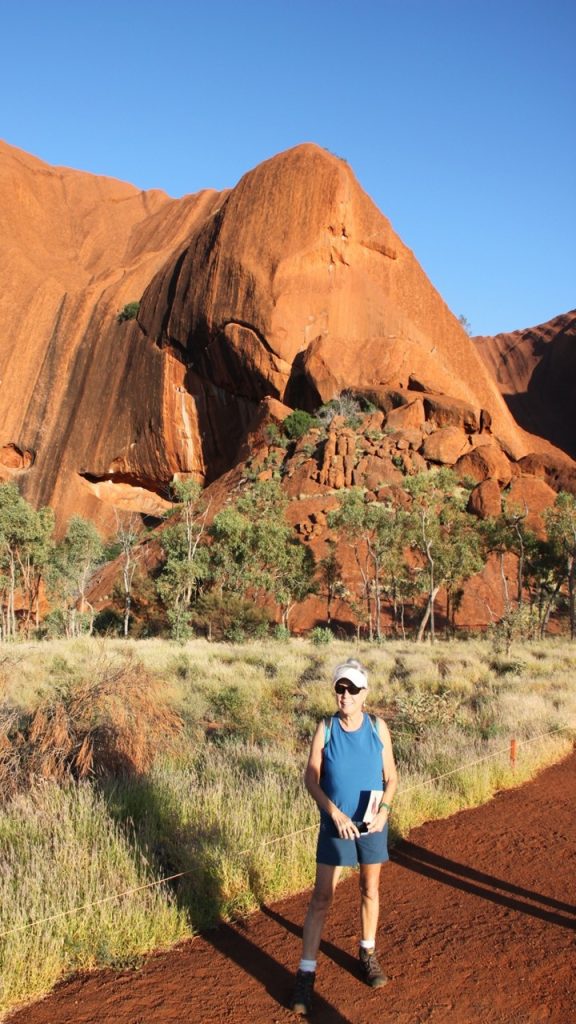
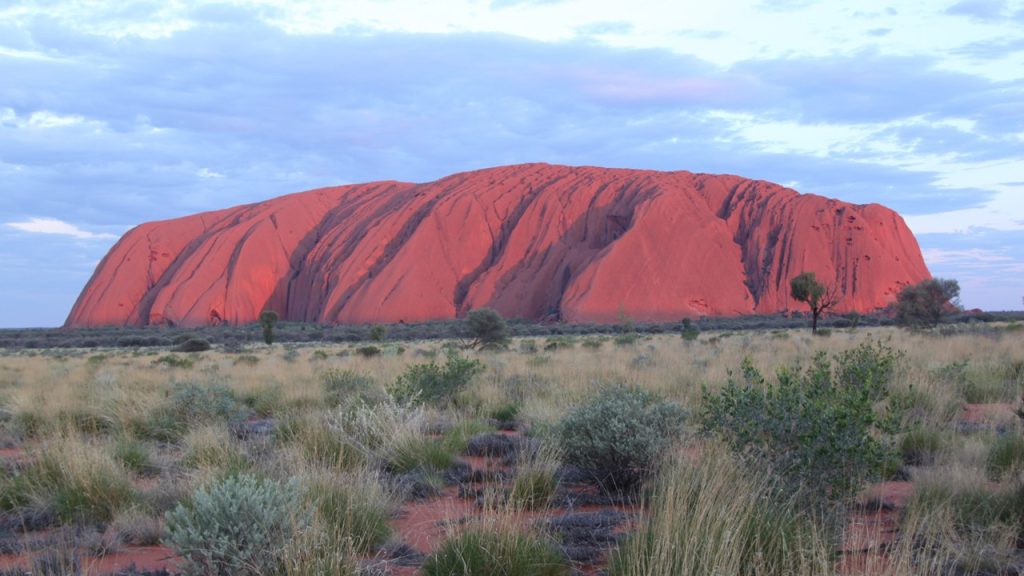
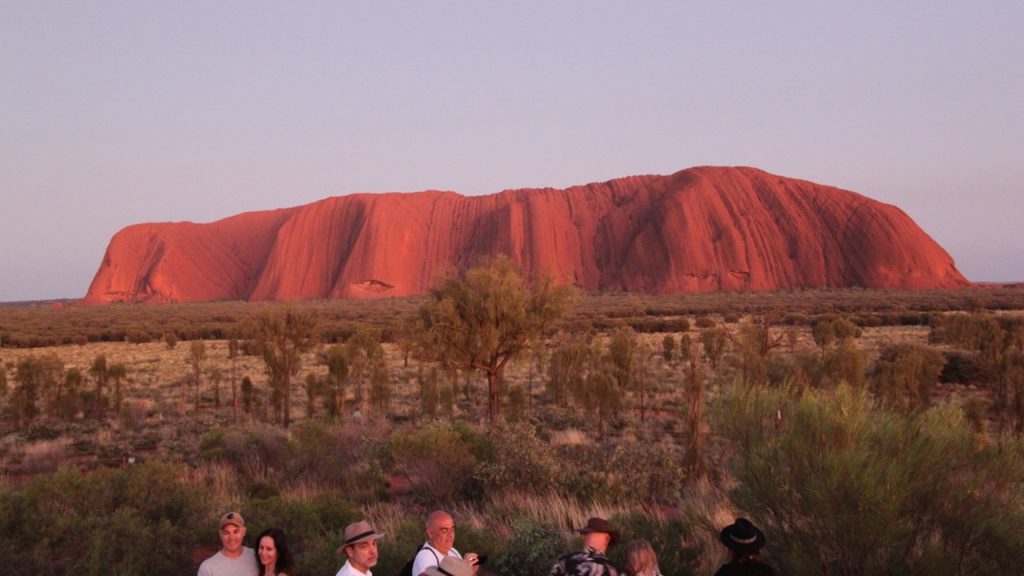
We then drove to Kata Tjuṯa Dune for a view of the Kata Tjuṯa rocks which are not at high as Uluru. This formation is not one rock but many rocks, and of a different composition. Along the way, we also saw a herd of wild camels.
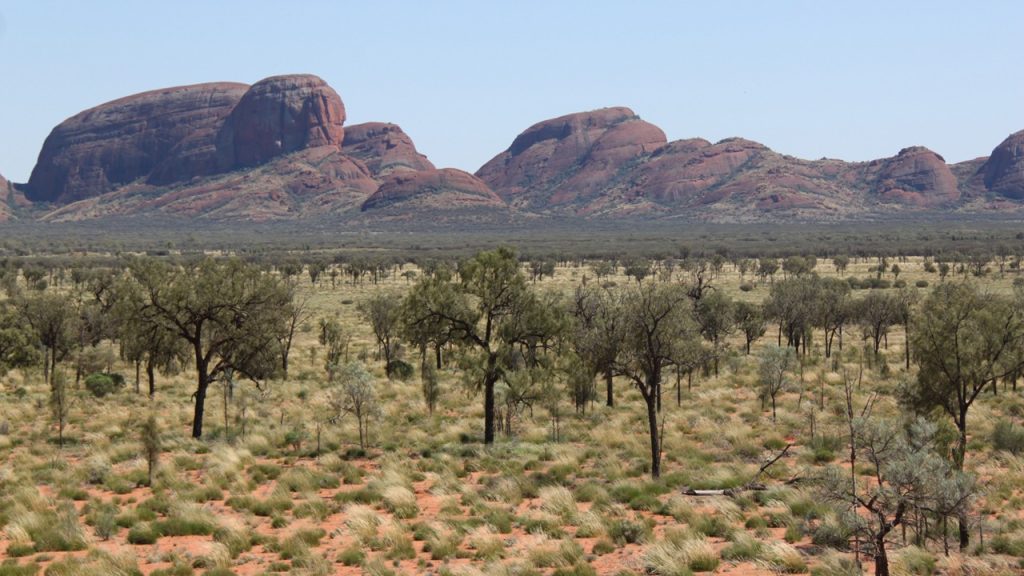
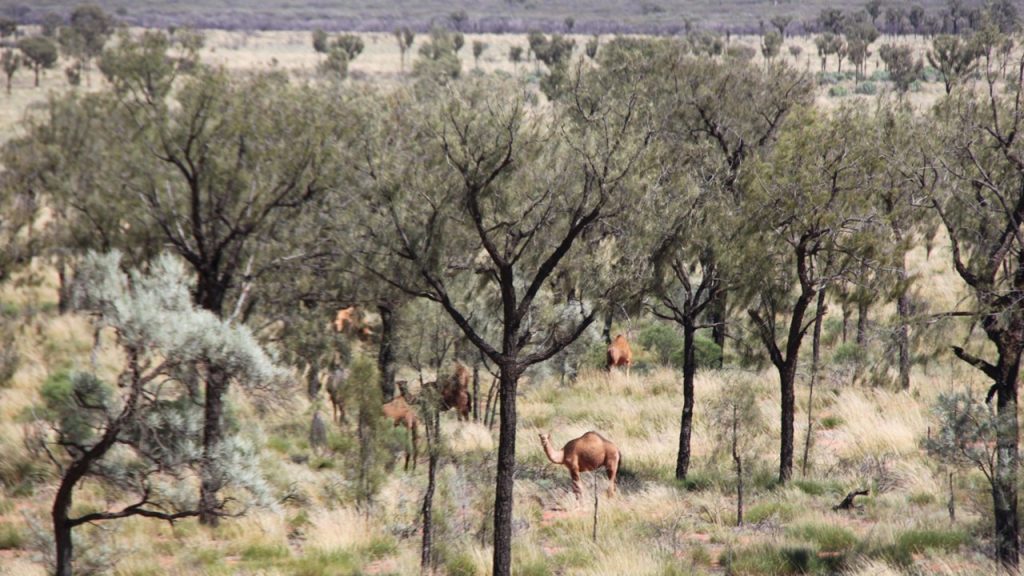
Next we returned to the resort for a late breakfast but as it was already 11am, we settled for an early lunch followed by showers and some swimming pool time. Later in the day, we played cards in the hotel lobby, as it was another 98-degree day. For dinner, we walked to nearby Desert Garden Hotel and enjoyed their service at the Managua Bistro and Bar. Dinner consisted of kangaroo kebabs, pumpkin salad, mushroom rigatoni, and chicken wings. After walking back to our hotel, we called it early night as we are planning to rise early and see Uluru at the Sunrise Overlook.
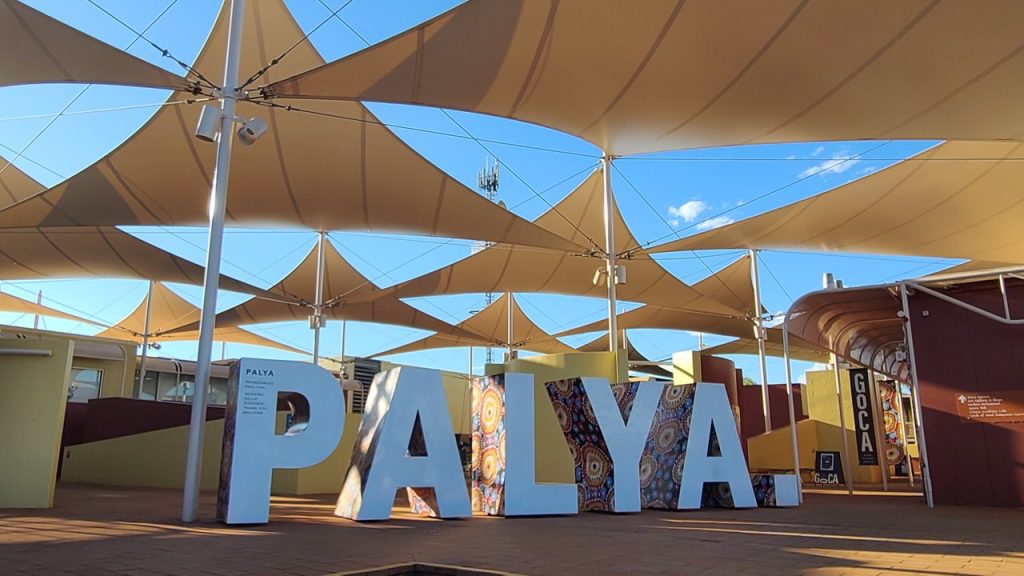
Saturday morning we were up very early to arrive before sunrise at Uluru at the Talinguru Nyakunytjaku, a series of boardwalks and platforms built to view the rock at sunrise. It was a quiet beautiful sight. Afterwards we drove back to the Sunset viewing area for a different morning view.

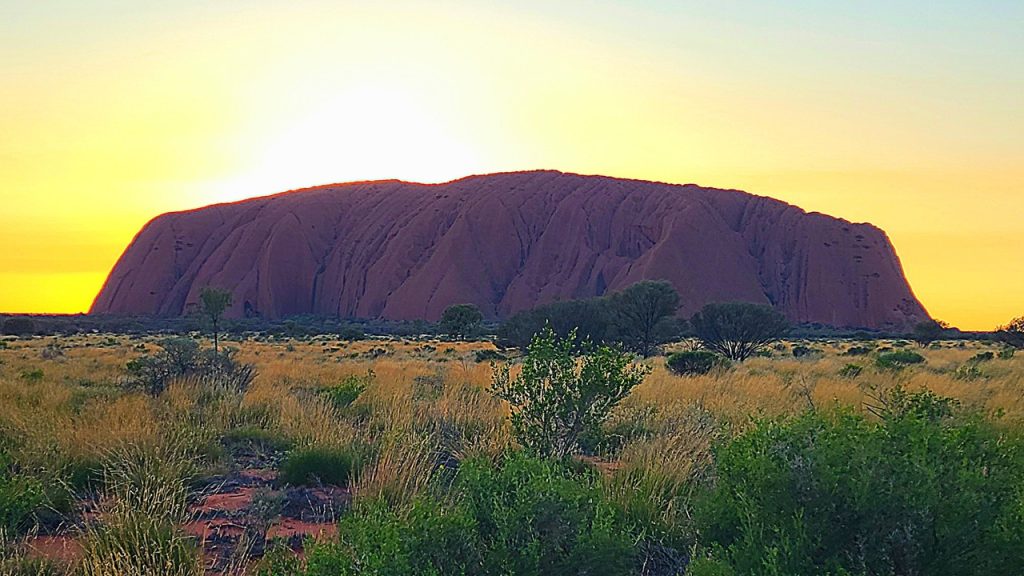
When we returned to the resort, we had breakfast at the Academy Cafe, a training facility for the local tribes-people to be trained in the hospitality industry. After packing, we played a quick round of cards prior to checking out of the hotel. On the way to the airport, we drove to the local camel farm and self-toured their farm and small museum. Here, we learned that the Afghan people brought the camels to Australia in the 1800’s. At that time, this was the only way that people were able to traverse the desert and move supplies and mail about. Eventually, trains, and then roads took over the transport system, and by the 1950s the camels were too expensive to keep and no longer of any use, and so, were abandoned to roam free. About 10 years ago after the camel population had ballooned to over a million camels, a desert catastrophe was in the making as the wild camel herds were consuming huge amounts of the scarce desert water, depriving native animals of water to survive. In response, the government began annual culling of the wild camels. Today the camels are only used for desert tourism. The camel farm museum had lots of old pictures, saddles and carts, a gift shop, a children’s petting area, cows, and water buffalo.
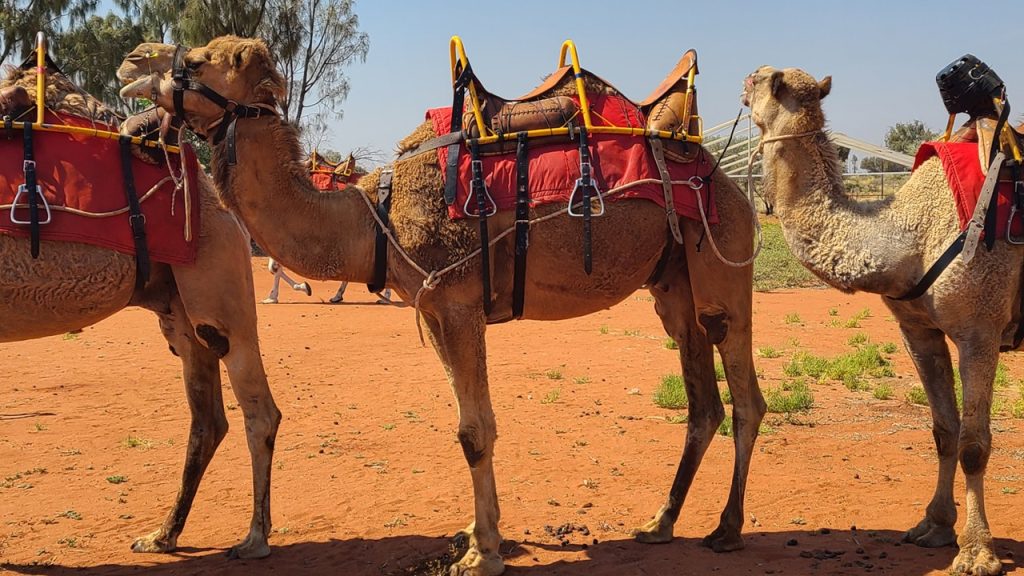
After that, it was on to the petrol station, car return, and the airport. There, we checked-in for flights to Melbourne where we spent the night at the airport hotel.
